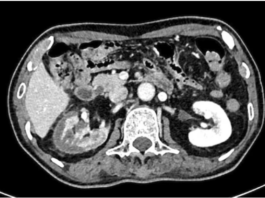Case of group A streptococcal pharyngitis in 6-year-old
This article describes the case of a 6-year-old boy who presented to the emergency with a 1-day history of severe throat pain and high fever. In addition, he was also unable to eat solid foods because of the pain. Physical examination was consistent with cervical node lymphadenopathy, palatal petechiae and a swollen uvula. The patient was also unable to eat solids because of pain. For further evaluation, doctors performed a rapid strep test to determine the cause of the streptococcal infection. A rapid strep test involves a quick throat swab to show the presence of a group A streptococcus bacteria within minutes.
The bacteria cause strep throat and other infections
The group of bacteria are known for causing strep throat and other infections, including pneumonia, abscesses and scarlet fever. The bacterial infection affects the back of the tonsils. Symptoms include irritation and swelling in the throat. Common symptoms of the illness include a swollen uvula, cervical node lymphadenopathy and palatal petechiae. The throat is especially painful while swallowing. There may be white or yellow spots or a coating on the throats and tonsils. The lymph nodes in the neck may also swell and become tender to touch. Based on the findings, doctors diagnosed the patient with group A streptococcal pharyngitis. Treatment included penicillin and topical analgesia.
The primary reason of prescribing antibiotics in streptococcal infection is to limit the risk of complications, for example, retropharyngeal abscess, endocarditis, meningitis and rheumatic fever. Studies have further shown that antibiotic therapy significantly reduces the risk of acute otitis media and peritonsillar abscess. However, antibiotic treatment is only effective when given within 5 days of the onset of symptoms. In conclusion, treating self-limiting illnesses with antibiotics can reduce the risk of complications. The infection is common in 5 to 10-year-olds with 20% of children affected each year.
Source: BMJ



